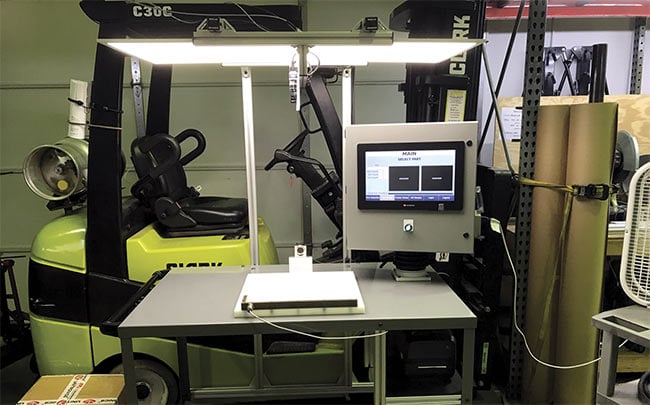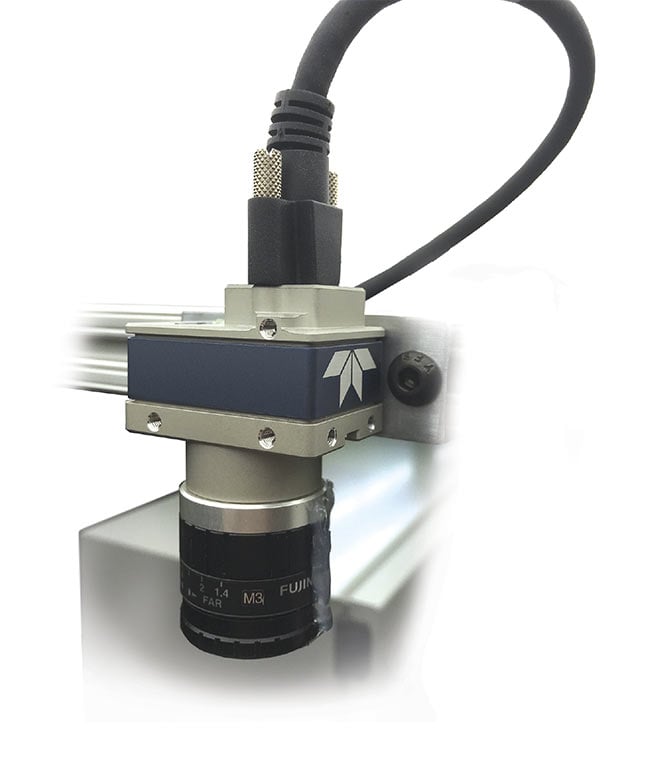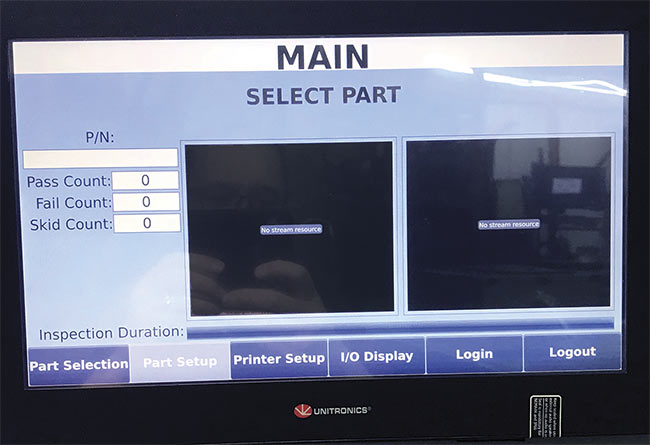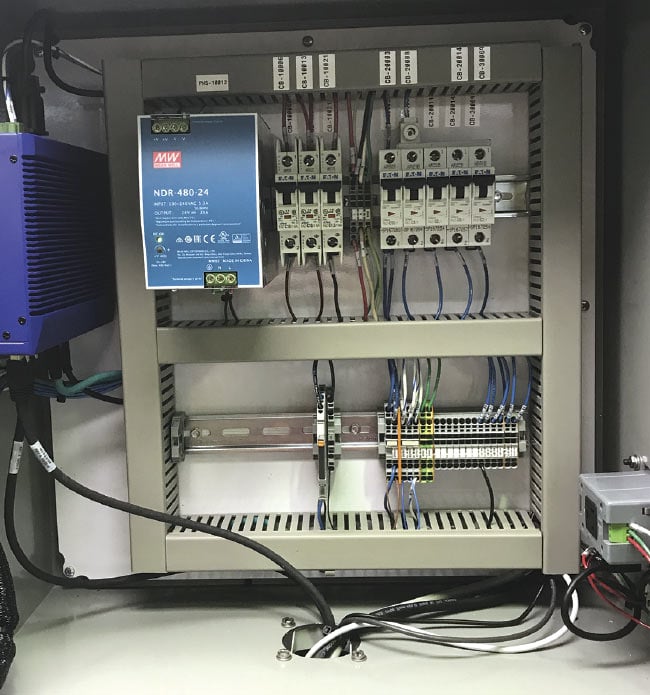HANK HOGAN, CONTRIBUTING EDITOR
As the name implies, an A-arm,
or control arm, looks like the letter “A.” It connects the wheels to a
vehicle’s frame and enables steering.
For one maker of A-arms, machine vision helped to solve manufacturing
problems, thanks to a system put together by systems integrator Global Controls Inc. of St. Charles, Ill.. Global Controls partnered with RSA Inc., an automation solution provider also in St. Charles, Ill., to implement the solution.
The A-arm manufacturer assembles the control arms for different families of vehicles and in various 3D orientations, resulting in more than 60 combinations. Before being packed and shipped, these configurations must be inspected to ensure the right components are used and that no critical pieces are missing. Each piece has to be correctly colored and the boxes properly labeled.
Overlooking problems
The manufacturer previously had been using manual inspection. This resulted in completed assemblies sometimes being shipped without critical components, in the wrong containers, and with incorrect colors.

Using two cameras, a mobile inspection station increases productivity and reduces rejection of A-arms in automobile suspension steering assemblies. Courtesy of Teledyne DALSA.
These errors lead to costly redo expenses when the final customer would reject the A-arm assembly and need a replacement. The A-arm company would also take a reputation hit, which is difficult to quantify in terms of costs.
The manufacturer therefore decided to try an automated solution and asked Global Controls and RSA to provide it. During investigation, the systems integrator and automation expert discerned two challenges that would have an impact on a vision solution.
“The challenge was determining the best location of the cameras in combination with the selection of lenses to be able to have enough field of view for the varying sized A-arms,” said Pat Klingberg, managing director at Global Controls. “The other challenge was the varying orientation of the critical inspection area.”

One of two cameras used for mobile inspection of vehicle suspension assemblies, enabling automation of a previously manual task. Courtesy of Teledyne DALSA.
Another consideration was that the A-arms were assembled at different
locations on the shop floor. With manual inspection methods, the inspector could walk from one area to the next, looking at each assembly. The existing
workflow therefore included the assumption that the inspection would take place at various locations and that the A-arms would be assessed in place, without having to be moved to a central location.
Rolling out a solution
Global Controls decided to use Teledyne DALSA Genie Nano M2420 and CS420 cameras, which met the first challenge, as they offered a resolution of 2448 × 2048 pixels. Combined with the right optics, this pixel count gave enough depth and width in the field of view to handle the differing A-arm sizes. Two cameras were necessary because of the two distinct inspection tasks. One task required a close-up of essential areas and a verification of features that distinguish parts intended for the left from those made for the right. The other visual check was for color and orientation of the assembly itself, requiring a wide field of view.

A simple interface enables operators to carry out an automated inspection of automobile suspension assemblies, printing out the right shipping tag if the part passes. If the part fails, the system details the error. Courtesy of Teledyne DALSA.
One advantage of this approach of using two cameras from a single vendor, according to Klingberg, is that both cameras can be managed by just one GEVA 4000 machine vision computer, saving money and space. Further savings come from the power-over-Ethernet capability of the computer, which simplifies the wiring by enabling connectivity and power to run over one cable.
Regarding the second challenge — the different part orientations — Klingberg said, “We explained to our customer that it would be less complicated if they could develop a series of part holders to make sure the critical area was kept at the same orientation to the camera.”
The manufacturer opted to follow this advice. Once the part holders were made and put in place, the inspection
problem became manageable. To automate operations, Global Controls put a proximity switch in a part holder. Placing a part in this holder triggered the switch, which would send a signal that started the inspection process.

The electronic controls inside a mobile inspection station. Courtesy of Teledyne DALSA.
The cameras, computers, 2- × 4-ft LED illumination, a printer for labeling, and the holders all went into a mobile cart. This cart approach enabled inspection to be performed anywhere on the shop floor. To ensure that inspection did not become a bottleneck, the manufacturer deployed two mobile carts in April 2019.
The new workflow goes as follows: After an operator enters a part number, the mobile cart system determines whether the A-arm assembly is correct; if it is, a shipping tag is printed. If there is a failure, the system alerts the operator and provides details about the error.
The inspection itself is speedy, averaging only five seconds to complete the vision tasks and the assessment. There is, of course, setup time.
Importantly, there has been an increase in productivity and a reduced rejection of shipped parts. “The improvement in rejection rate was enough to justify the cost of the carts,” Klingberg said.